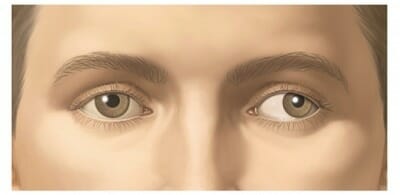What Exactly Is Amblyopia?

Amblyopia, known more commonly as “lazy eye,” is a condition in which the visual acuity of one or both eyes does not develop normally, regardless of whether or not the eye is healthy.
If proper treatment for amblyopia is not sought, the condition can worsen over time. Ultimately, at the far negative end of the spectrum, the condition can result in near-blindness. Amblyopia currently affects between two and three percent of the population of the United States. If left untreated, the condition can ultimately lead to the vision in the affected eye being ignored by the brain.
More on the Eye Condition, Amblyopia
Amblyopia usually begins at either birth or during early childhood in those afflicted with the condition. The most common indicator of amblyopia in children is squinting, or the closing one eye to see. Other symptoms may include generally poor eyesight, or reported headaches and eyestrain.
Though considerably more rare, amblyopia can develop in adults who have not reported issues with their eyesight throughout childhood. Though adults may more easily dismiss the effects of amblyopia on their eyesight, treatment is still warranted and can correct the condition if sought and properly conducted.
Even in adults, if amblyopia goes untreated, it can lead to serious issues that may not be correctable if not addressed in time. Typically caused by misalignment between the eyes, known as strabismus, the symptoms of amblyopia can present either intermittently, or be of a more constant nature in both children and adults.
Amblyopia can all be caused by a notable difference in the refractive ability of the eyes. In these cases, one eye may be more nearsighted, farsighted, or affected by astigmatism than the other. Regardless of the underlying cause, amblyopia must be effectively treated to avoid serious, long-term repercussions to the eyesight of those affected.
Treatment can vary, but usually includes either the patching of the healthier eye, the administering of prescription eye drops, the use of corrective lenses, or surgical treatment. These treatments are often prescribed in conjunction with therapeutic exercises that help the patient’s eyes to learn to work in unison. Patching works by forcing the brain to use the eye affected with amblyopia, which in turn drives the development of visual acuity in the eye.
[Photo Via: UVA Health]

